To the depression sufferer:
The more you read about depression, the more useful ideas you will pick up. And you never know when you will stumble across an idea -- which may be nothing more than everyday folk wisdom -- that will explode into a break-through for you. The asterisks next to books in this list mean that I recommend them -- and more asterisks mean a higher recommendation. I have also added brief notes next to some key items. Throughout, I have tried to refer mainly to books rather than articles so that the general reader might be able to find the referenced work in a general library. For the most recent developments in research results and depression trends, I have had to refer occasionally to the technical literature, however.
To the Professional Reader:
An authoritative comprehensive review by Karasu (1990a and 1990b) of the experimental and theoretical literature on depression and various therapies for it arrives at conclusions consistent with the earlier findings cited in the text, and with the theoretical ideas presented in the book. This review makes it unnecessary that the recent literature be reviewed in great detail here. For those persons wishing a quick tutorial on the state of professional thought, I would suggest turning first to Karasu's articles, and to the collection edited by Alloy (1988). *** NEW TO BE ADDED
Chevalier, Nancy Young, "When Pills, Shock Therapy Failed...I Imagined Dancing In Vienna," in Washington Post Health, January 16, 1990, p. 14.
Ben-David, Calev, "The Philosopher's Couch," in The Jerusa- lem Post International Edition, Week ending March 31, 1990, p. 13.
Ellis, Albert, How To Subbornly Refuse To Make Yourself Miserable About Anything--88--Yes, Anything! (Secaucus, New Jer- sey: Lyle Stuart Inc., 1988).
Hoffmann, Banesh, Albert Einstein - Creator & Rebel (New York: The Viking Press, Inc., 1972).
Karasu, T. Byram, "Toward a Clinical Model of Psychotherapy for Depression, I: Systematic Comparison of Three Psychothera- pies," in The American Jouranl of Psychiatry 147:2, February 1990, pp. 133-147.
Karasu, T. Byram, "Toward a Clinical Model of Psychotherapy for Depression, II: An Integrative and Selective Treatment Ap- proach," in The American Journal of Psychiatry 147:3, March 1990, pp. 269-278.
Klerman, Gerald L., "The Nature of Depression -- Mood, Symp- tom, Disorder," in The Measurement of Depression, Guilford Publications, Inc., 1987.
Kolata, Gina, "Manic-Depression Gene Tied to Chromosome 11," in Research News, March 6, 1987, pp. 1139-49.
Kovacs, Maria, et al, "Depressed Outpatients Treated With Cognitive Therapy or Pharmacotherapy," in Arch. Gen. Psychiatry, Vol. 38, January 1981, pp. 33-39.
Miller, Ivan W., et al, "Cognitive-Behavioral Treatment of Depressed Inpatients: Six- and Twelve-Month Follow-Up," in The American Journal of Psychiatry 146:10, October 1989, pp. 1274- 1279.
Oatley, Keith, Best Laid Schemes -- The Psychology of Emotions (Cambridge: Cambridge University Press, 1992).
The Philosophy of William James (Drawn from his own Works) Introduction by Horace M. Kallen (New York: The Modern Library, Inc., 1925).
Seligman, Martin E. P., Learned Optimism (New York: Alfred A. Knopf, 1991).
Selmi, Paulette M., et al, "Computer-Administered Cognitive- Behavioral Therapy for Depression," in The American Journal of Psychiatry 147:1, January 1990, pp. 51-56.
Simons, Anne D., et al, "Cognitive Therapy and Pharmaco- therapy for Depression," in Arch. Gen. Psychiatry, Vol. 43, January 1986, pp. 43-48.
Sotsky, Stuart M., et al, "Patient Predictors of Response to Psychotherapy and Pharmacotherapy: Findings in the NIMH Treatment of Depression Collaborative Research Program," in The American Journal of Psychiatry 148:8, August 1991, pp. 997-1008.
Thase, Michael E., et al, "Severity of Depression and Response to Cognitive Behavior Therapy," in The American Journal of Psychiatry 148:6, June 1991, pp. 784-789.
Wells, Kenneth B., et al, "The Functioning and Well-being of Depressed Patients," in JAMA, August 18, 1989, Vol. 262, No. 7, pp. 914-919.
Woolf, Leonard, The Journey Not the Arrival Matters (New York: Harcourt Brace Jovanovich, 1975).
****
Abraham, Karl, "Notes on the Psycho-Analytical Investigation and Treatment of Manic-Depressive Insanity and Allied Conditions," in Gaylin, cited below. Alcoholics Anonymous (New York: Alcoholics Anonymous World Services, third edition, 1976).
Alloy, Lauren B., ed., Cognitive Processes In Depression (New York: The Guilford Press, 1988).
--- and Lyn Y. Abramson, "Depressive Realism: Four Theoretical Perspectives", in Alloy (1988),223-265.
Alvarez, 1971
American Psychiatric Association, Diagnostic and Statistical Manual, (Washington: APA, 3rd edition, 1980, fourth edition (DSM-IIIR), 1987).
Andreasen, Nancy C., and Ira D. Glick, "Bipolar Affective Disorder and Creativity: Implications and Clinical Management", Comprehensive Psychiatry, Vol 29, May/June, 1988, 207-217.
Arieti, Silvano, "Manic-Depressive Psychosis", in Arieti(ed), American Handbook of Psychiatry, 2 vols. (New York: Basic Books, 1959).
**Beck, Aaron T., Depression: Clinical, Experimental, and Theoretical Aspects (New York: Harper and Row, 1967). This is still one of the two most important works in the field, and the book that saved me from depression. But it is written for the professional rather than the layman.
*Beck, Aaron T., Cognitive Therapy and the Emotional Disorders (New York: New American Library, 1976). For the professional.
Beck, Aaron T., "Cognitive Models of Depression," in Journal of Cognitive Psychotherapy, Volume 1, Number 1, 1987, pp. 5-37.
Beck, Aaron T., and David A. Clark, "Anxiety and Depression: An Information Processing Perspective," in Anxiety Research, Vol. 1, pp. 23-36, 1988.
*Beck, Aaron T., A. John Rush, Brian F. Shaw, and Gary Emery, Cognitive Therapy of Depression (New York: Guilford, 1979). For the professional, but full of helpful tips.
Beck, Aaron T., Gary Brown, Robert A. Steer, Judy I. Eidelson, and John H. Riskind, "Differentiating Anxiety and Depression: A Test of the Cognitive Content-Specificity Hypothesis," in Journal of Abnormal Psychology, Vol. 96, No. 3, pp. 179-183, 1987.
Behanan, Kovoor T., Yoga: A Scientific Evaluation (New York: Dover, 1937/1959).
Benson, Herbert, with Miriam Z. Klipper, The Relaxation Response (New York: Avon Books, 1976).
Bibring, Edward, "The Mechanism of Depression," in Gaylin, cited below.
Bonime, Walter, "The Psychodynamics of Neurotic Depression" , Chapter 18, in Vol. 3, 1966 in ?
Bowlby, John, Attachment vol I of Attachment and Loss (New York: Basic Books, 1969.
Bowlby, John, Loss: Sadness and Depression (vol III of Attachment and Loss) (New York: Basic Books, 1980)
Brickman, Philip, and Dan Coates, and Ronnie Janoff Bulman, "Lottery Winners and Accident Victims: Is Happiness Relative?", xerox, August, 1977.
Brooks, Van Wyck, The Days of the Phoenix (New York: Dutton, 1957), excerpted as "A Season In Hell," in Kaplan, 1964.
[include only if cited in text] Brussel, James A., and Theodore Irwin, Understanding and Overcoming Depression (New York: Hawthorn, 1973).
Buber, Martin, Good and Evil, (New York: Scribners, 1952). ***Burns, David D., Feeling Good -- The New Mood Therapy (New York: William Morrow and Company, Inc., 1980, also in paperback). One of the two best self-help books on the subject.
Burtt, E. A., The Teachings of the Compassionate Buddha (New York: Mentor, 1955).
*Cammer, Leonard, Up From Depression (New York: Simon and Schuster, 1969, quotes from Pocket Books ed. 1971).
Campbell, Donald T. and Julian Stanley, "Experimental and Quasi-Experimental Designs for Research in Teaching", in N. L. Gage (ed.), Handbook of Research in Teaching (Chicago: Rand McNally, 1963).
*Carnegie, Dale How to Stop Worrying and Start Living (New York: Simon and Schuster, 1944).
Collingwood, Robin G., An Autobiography (Oxford: OUP, 1939/1970).
Conze, Edward, Buddhism: Its Essence and Development (New York: Cassirer, 1951, Harper Torchbook, 1959).
*Cousins, Norman, Anatomy of an Illness as Perceived by the Patient (New York: Bantam Books, Inc., 1981).
Coyne, J. C. and Gotlib, I. H. , "The Role of Cognition in Depression: A Critical Appraisal", Psychological Bulletin, 94, 1983, pp. 472-505.
Custance in Kaplan, 1964, cited below, pp. 56-58.
Dewey, John, Experience and Nature (New York: Dover, 1929/1958).
Dobson, Keith S., ed., Handbook of Cognitive-Behavioral Therapies (New York: The Guilford Press, 1988).
Dominian, Jack, Depression (Great Britain: William Collins Sons and Co. Ltd. Glasgow, 1976).
Duval, S., and R. A. Wicklund, A Theory of Objective Self- Awareness (New York: Academic Press, 1972).
Eaves, George G., Cognitive Patterns in Endogenous and Nonendogenous Unipolar Major Depression, Ph. D. dissertation, The University of Texas at Dallas, 1981, Abstract
-----, and A. J. Rush, "Cognitive Patterns in Symptomatic and Remitted Unipolar Major Depression," in Journal of Abnormal Psychology, 33(1), 1984, pp. 31-40.
Elkin, Irene, Paul A. Pilkonis, John P. Docherty, and Stuart M. Sotsky, "Conceptual and Methodological Issues in Comparative Studies of Psychotherapy and Pharmacotherapy, I: Active Ingredients and Mechanisms of Change," in Am J Psychiatry 145:8, August, 1988, pp. 909-17.
Elkin, Irene, Paul A. Pilkonis, John P. Docherty, and Stuart M. Sotsky, "Conceptual and Methodological Issues in Comparative Studies of Psychotherapy and Pharmacotherapy, II: Nature and Timing of Treatment Effects," in Am J Psychiatry, 145:9, September, 1988, pp. 1070-76.
----- et al., "NIMH Treatment of Depression Collaborative Research Program: Initial Outcome Findings", abstract of paper given at Am. Assn. for the Adv. of Science, May, 1986.
Ellis, Albert, "Outcome of Employing Three Techniques of Psychotherapy", Journal of Clinical Psychology, 13, 1957, 344- 350.
**-----Reason and Emotion in Psychotherapy (New York: Lyle Stuart, 1962). One of the two best theoretical books for the professional.
*-----"The Use of Rational Humorous Songs in Psychotherapy", in W. F. Fry, Jr. and W. A. Salameh (eds.), Handbook of Humor in Psychotherapy: Advances in the Clinical Use of Humor (Sarasota, Fla: Professional Resource Exchange, Inc., 1987), pp. 265-285.
-----"The Impossibility of Achieving Consistently Good Mental Health", American Psychologist, 42, April, 1987, 364-375.
Ellis, Albert, How To Stubbornly Refuse to Make Yourself Miserable About Anything, Yes Anything (New York; Lyle Stuart, 1988).
***-----, and Robert A. Harper, A New Guide to Rational Living (North Hollywood, Calif: Wilshire, revised 1977 edition). One of the two best self-help books.
Elster, Jon, Multiple Selves.
**Emery, Gary, A New Beginning (New York; Simon and Schuster, 1981). Lots of valuable practical advice from a member of Beck's cognitive therapy "school."
Endler, Norman S., Holiday of Darkness: A Psychologist's Personal Journey out of His Depression (New York: Wiley, 1982). The title is apt. The author was treated only with drugs and electroshock; no psychotherapy is mentioned. His description of the side-effects of the drugs is interesting. The book is generally upbeat and hopeful.
Flach, Frederic F., The Secret Strength of Depression (New York: Bantam Books, 1975).
**Frankl, Viktor E., Man's Search For Meaning (New York: Washington Square Press, 1963). Fascinating and often useful ideas rooted in a philosophical attitude toward life and depression.
**-----The Doctor and the Soul, 2nd ed.(New York: Bantam, 1969). More excellent ideas by Frankl.
Freud, Sigmund, "Mourning and Melancholia," in Gaylin, 1968, cited below.
Gallagher, 1986
Gaylin, Willard (ed.), The Meaning of Despair (New York: Science House, Inc., 1968).
Gaylin, Willard, Feelings: Our Vital Signs (New York: Harper & Row, 1979)
Gibson, William, A Season in Heaven (New York: Bantam, 1974). Interesting description of a meditation community by a first-rate dramatist.
Gilson, M., "Depression as Measured by Perceptual Bias in Binocular Rivalry." Unpublished doctoral dissertation, Georgia State University. (University Microfilms No. AAD83-27351), 1983. Cited by Beck, 1988.
Glatzer, Nahum (ed.), The Dimensions of Job (New York: Schocken, 1969).
Goddard
Greenberg, Michael S., Carmelo V. Vazquez, and Lauren B. Alloy, "Depression versus Anxiety: Differences in Self- and Other-Schemata", in Alloy (1988), 109-142.
*Greist, John H., and James W. Jefferson, Depression and Its Treatment (Washington: Am. Psychiatric Press, 1984). A mainstream "official" medical discussion of depression.
Grinspoon, Lester (ed.), Psychiatry Update, Vol. II (Washington: American Psychiatric Press, 1983). A good review for professionals of the state of the art.
Gussow, Mel, "Elizabeth Swados - A Runaway Talent," New York Times Magazine, March 5, 1978.
Heinicke, Christoph M., "Parental Deprivation in Early Childhood", in Scott and Senay.
Hildebrand, Kenneth, Achieving Real Happiness (New York: Harper, 1955).
Hirschfeld, Robert M. A., Gerald L. Klerman, Paula J. Clayton, and Martin B. Keller, "Personality and Depression - Empirical Findings," in Archives of General Psychiatry, September, 1983, Volume 40, pp. 993-98.
Holden, Constance, "Depression Research Advances, Treatment Lags", Science, 15 August, 1986, 723-727
Honigfeld, Gilbert, and Alfreda Howard, Psychiatric Drugs, A Desk Reference (New York and London: Academic Press, 1973).
Hume, David, Essential Works (New York: Bantam, 1965)
***James, William, Varieties of Religious Experience. The all-time classic about mental illness.
-----, Psychology, one-volume edition (Greenwich, Conn: Fawcett, 1892/1963).
Janoff-Bulman, Ronnie, and Bernard Hecker, "Depression, Vulnerability, and World Assumptions", in Alloy (1988), 177-192
Johnston, Tracy, review of John Maher of Delancey Street by Grover Sales, New York Times Book Review, August 15, 1976, p. 6.
Kahneman, Daniel, and Amos Tversky, "Prospect Theory: An Analysis of Decision Under Risk," in Decision, Probability, and Utility, Peter Gardenfors and Nils-Eric Sahlin (eds.) (Cambridge: Cambridge University Press, 1988).
Kaplan, Bert, The Inner World of Mental Illness (New York, Evanston, and London: Harper and Row, 1964). Writings by people who have suffered from mental illness.
Kiev, Ari, Riding Through the Hassles, Snags, and Funks (New York: Dutton, 1980)
Killian
Klerman, G. L., "Evidence for Increase in Rates of Depression in North America and Western Europe in Recent Decades," in New Results in Depression Research, Eds. H. Hippius set al, Springer-Verlag Berlin Heidelberg, 1986.
Klerman, Gerald L., "Relationship Between Anxiety and Depression," in Handbook of Anxiety, Vol. 1: Biological, Clinical and Cultural Perspectives, Elsevier Science Publishers B.V., 1988, pp. 59-82.
Klerman, Gerald L., "Depression and Related Disorders of Mood (Affective Disorders)," in The New Harvard Guide to Psychiatry (Cambridge and London: Belknap Press of Harvard University Press, 1988).
Klerman, Gerald L., and Robert M. A. Hirschfeld, "Personality As a Vulnerability Factor: With Special Attention To Clinical Depression," in Handbook of Social Psychiatry, Henderson/Burrows (eds), Elsevier Science Publishers B. V. (Biomedical Division), 1988, pp. 41-53.
Klerman, Gerald L., Philip W. Lavori, John Rice, Theodore Reich, Jean Endicott, Nancy C. Andreasen, Martin B. Keller, and Robert M. A. Hirschfeld, "Birth-Cohort Trends in Rates of Major Depressive Disorder Among Relatives of Patients With Affective Disorder," in Archives of General Psychiatry, July, 1985, Volume 42, pp. 689-93.
*Kline, Nathan, From Sad to Glad (New York: Ballantine, 1975). By a pioneer in anti-depressant medication.
*Knauth, Percy, A Season in Hell (New York: Harper & Row, 1975). A depression sufferer's own well-told story.
Kovacs, Maria, "Psychotherapies for Depression", in Grinspoon, 1983, cited above.
*LaHaye, Tim, How To Win Over Depression (Grand Rapids, Mich: Zondervan, 1974).
**Lazarus, Arnold, and Allen Fay, I Can If I Want To (New York: William Morrow, 1975). Excellent common-sense advice for improving your life, consistent with the analysis given here.
***Lewinsohn, Peter M., Ricardo F. Munoz, Mary Ann Youngren, Antonette M. Zeiss, Control Your Depression (Englewood Cliffs, NJ: Prentice-Hall, Inc., 1978). One of the very best self-help books for depression, emphasizing "social learning" and behavioral exercises.
Lowen, Alexander, Depression and the Body (Baltimore: Penguin Books Inc., 1973).
Mahoney, Michael J. and Carl E. Thoresen, Self-Control: Power to the Person (Monterey, Calif: Brooks/Cole, 1974).
Maslow, 1950
Maslow, Toward a Psychology of Being 2nd ed.,(New York: Van Nostrand,1968)
McKinney, William T. Jr., Stephen J. Suomi, and Harry F. Harlow, "New Models of Separation and Depression in Rhesus Monkeys", in Scott and Senay.
Mendels, Joseph (ed.), Psychobiology of Depression (New York: SP Books Division of Spectrum Publications, distributed by Halsted Press, 1975).
Miller, Ivan W., William H. Norman, and Gabor I. Keitner, "Cognitive-Behavioral Treatment of Depressed Inpatients: Siox- and Twelve-Month Follow-up", American Journal of Psychiatry, Vol 146, October, 1989, 1274-1279.
Musson, Robert F. and Lauren B. Alloy, "Depression and Self- Directed Attention", in Alloy (1988), 193-222
Myers, Gloria, as told to Diane Clark, "Clinical Depression: Victim Recalls 'Living Death'", Champaign-Urbana News Gazette, Oct. 30, 1977. p. 10B.
Naranjo, Claudio and Robert E. Ornstein, On the Psychology of Meditation (New York: Viking, 1971).
Nelson, R. Eric, and W. Edward Craighead, "Selective Recall of Positive and Negative Feedback, Self-control Behaviors, and Depression," in Journal of Abnormal Psychology, 1977, Vol. 86, No. 4, pp. 379-88.
*NIMH, Helpful Facts About Depressive Disorders (Washington, 1987).
Ostow, Mortimer, The Psychology of Melancholy (New York: Harper and Row, 1970).
**Papalos, Dimitri I., and Janice Papalos, Overcoming Depression ( New York: Harper and Row, 1987). A practical manual for what to do when depression strikes you or a person you care about.
Peterson, Christopher, Barbara A. Bettes, and Martin E. P. Seligman, "Depressive Symptoms and Unprompted Causal Attributions: Content Analysis" in Behav. Res. Ther., Vol. 23, No. 4, pp. 379-382, 1985.
Peterson, Christopher, and Martin E. P. Seligman, "casual Explanations as a Risk Factor for Depression: Theory and Evidence," in Psychological Review, Vol. 91, No. 3, pp. 347-374, 1984.
Plath, Sylvia, The Bell Jar (New York: Bantam, 1971).
Rehm, Lynn P., "Self-management and Cognitive Processes in Depression", in Alloy (1988), 143-176
Rosenthal, D., 1970
Royko, Mike, "How To Ease That Hangover," in Chicago Daily News, Jan 1-2, 1977, p. 3.
Rubin, Theodore Isaac, Compassion and Self-Hate (New York: Ballantine, 1975).
**Russell, Bertrand, The Conquest of Happiness (New York: Signet, 1930-1951).
Scheinin, 1983
Schneider, 1962
Scott, John Paul, and Edward C. Senay (eds.), Separation and Depression (Washington: AAAS, 1973).
Scott, John Paul, John M. Stewart, and Victor J. DeGhett, "Separation in Infant Dogs", in Scott and Senay.
Seligman, Martin E. R., Helplessness: On Depression, Development, and Death (San Francisco: W. H. Freeman, 1975).
Seligman, Martin E. P., Camilo Castellon, John Cacciola, Peter Schulman, Lester Luborsky, Maxine Ollove, and Robert Downing, "Explanatory Style Change During Cognitive Therapy for Unipolar Depression," in Journal of Abnormal Psychology, Vol. 97, No. 1, 1988, pp. 1-6.
Selye, Hans, Stress Without Distress (New York: Signet, 1974).
Simon, Julian L., Basic Research Methods in Social Science (New York: Random House, 1969; second edition, 1978; third edition, [with Paul Burstein], 1985.
Simon, Julian L., Applied Managerial Economics (Englewood Cliffs: Prentice-Hall, 1975).
Simon, Julian L., The Economics of Population Growth (Princeton: Princeton University Press, 1977).
Simon, Julian L., The Ultimate Resource (Princeton: Princeton University Press, 1981).
Steer, Robert A., Aaron T. Beck, John H. Riskind, and Gary Brown, "Differentiation of Depressive Disorders From Generalized Anxiety by the Beck Depression Inventory," in Journal of Clinical Psychology, Vol. 42, No. 3, May, 1986, pp. 475-78.
Suzuki, Daisetz T., Outlines of Mahayana Buddhism (New York: Schocken, 1907/1963).
Tolstoy, Leo, A Confession, trans. Aylmer Maude (London: Oxford U. P., 1920).
Tutko, Thomas, "Winning Isn't Everything It's Cracked Up To Be," in The New York Times, July 4, 1976.
Vaillant, George E., "The `Normal Boy' in Later Life: How Adaptation Fosters Growth," Harvard Magazine, November-December 1977, pp. 46-61.
*Watts, Alan W., The Meaning of Happiness (New York: Harper and Row, 1940, Perennial Library edition, 1968).
Watts, 1972
Weil, Andrew, The Natural Mind (Boston: Houghton Mifflin Company, 1972).
Wender, Paul., and Donald F. Klein, Mind, Mood, and Medicine (New York: Farrar, Straus, and Giroux, 1981).
Wilde, Oscar, in Burnett, 1958
Zigler, Edward and Marion Glick, "Is Paranoid Schizophrenia Really Camouflaged Depression?" American Psychologist, April, 1988, 284-290.
next: Julian L. Simon: Short Biography
~ back to Good Mood homepage
~ depression library articles
~ all articles on depression


 Relationships are often a puzzle. Sometimes the pieces fit.. . sometimes they don't. Celebrate Love is designed to help people fit the pieces of the relationship puzzle together in a healthy way.
Relationships are often a puzzle. Sometimes the pieces fit.. . sometimes they don't. Celebrate Love is designed to help people fit the pieces of the relationship puzzle together in a healthy way.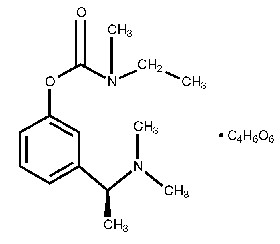
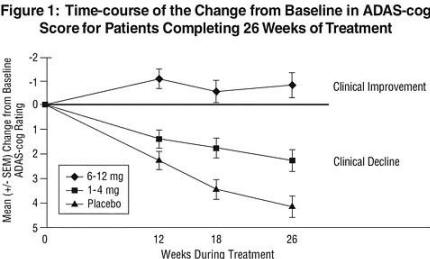




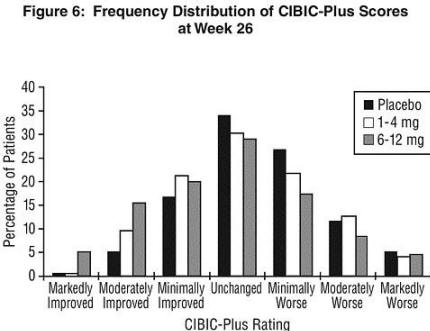
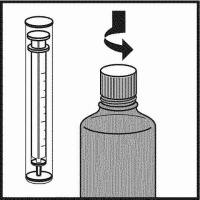
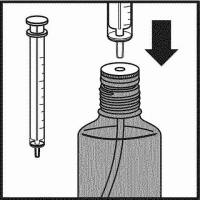


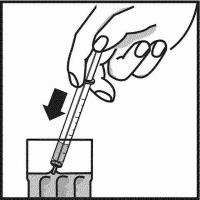
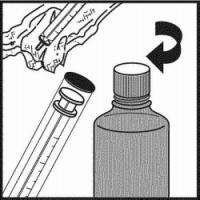
 MPD does not exist in the abstract or as a freestanding target symptom. It is found in a diverse group of individuals with a wide range of Axis II or character pathologies, concomitant Axis I diagnoses, and many different constellations of ego strengths and dynamics. It may take many forms and express a variety of underlying structures. Generalizations drawn from the careful study of single cases may prove grossly inaccurate when applied to other cases. Perhaps MPD is understood most parsimoniously as the maladaptive persistence, as a post-traumatic stress disorder, of a pattern which proved adaptive during times when the patient was overwhelmed as a child.
MPD does not exist in the abstract or as a freestanding target symptom. It is found in a diverse group of individuals with a wide range of Axis II or character pathologies, concomitant Axis I diagnoses, and many different constellations of ego strengths and dynamics. It may take many forms and express a variety of underlying structures. Generalizations drawn from the careful study of single cases may prove grossly inaccurate when applied to other cases. Perhaps MPD is understood most parsimoniously as the maladaptive persistence, as a post-traumatic stress disorder, of a pattern which proved adaptive during times when the patient was overwhelmed as a child. There are as many relationship issues as there are people, however if I were going to make a list of the most frequent issues I would say that money, in-laws,
There are as many relationship issues as there are people, however if I were going to make a list of the most frequent issues I would say that money, in-laws,  The dissociative spectrum (Braun, 1988) extends from normal dissociation to poly-fragmented DID. All of the disorders are trauma-based, and symptoms result from the habitual dissociation of traumatic memories. For example, a rape victim with Dissociative Amnesia may have no conscious memory of the attack, yet experience depression, numbness, and distress resulting from environmental stimuli such as colors, odors, sounds, and images that recall the traumatic experience. The dissociated memory is alive and active--not forgotten, merely submerged (Tasman Goldfinger, 1991). Major studies have confirmed the traumatic origin of DID (Putnam, 1989, and Ross, 1989), which arises before the age of 12 (and often before age 5) as a result of severe physical, sexual, and/or emotional abuse. Poly-fragmented DID (involving over 100 personality states) may be the result of sadistic abuse by multiple perpetrators over an extended period of time.
The dissociative spectrum (Braun, 1988) extends from normal dissociation to poly-fragmented DID. All of the disorders are trauma-based, and symptoms result from the habitual dissociation of traumatic memories. For example, a rape victim with Dissociative Amnesia may have no conscious memory of the attack, yet experience depression, numbness, and distress resulting from environmental stimuli such as colors, odors, sounds, and images that recall the traumatic experience. The dissociated memory is alive and active--not forgotten, merely submerged (Tasman Goldfinger, 1991). Major studies have confirmed the traumatic origin of DID (Putnam, 1989, and Ross, 1989), which arises before the age of 12 (and often before age 5) as a result of severe physical, sexual, and/or emotional abuse. Poly-fragmented DID (involving over 100 personality states) may be the result of sadistic abuse by multiple perpetrators over an extended period of time.